|
|
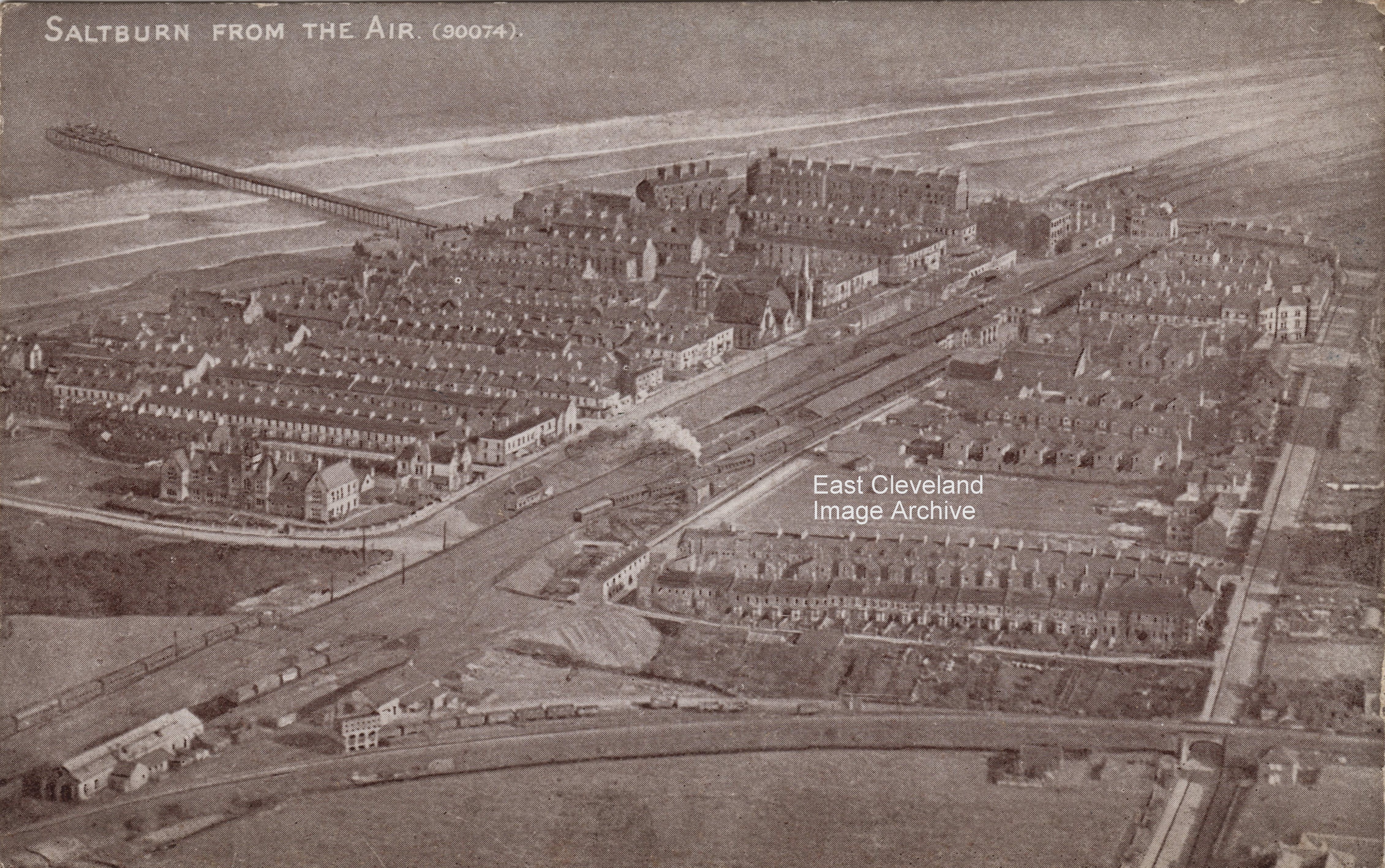
A further postcard view by Photocrom Co. Ltd, Zetland Terrace is clearly visible as well as the western side of Hilda Place. However neither Bristol Avenue or Exeter Street have been built; as the card is unused, again assistance with dating would be much appreciated!
Image courtesy of Julie Tyrka.
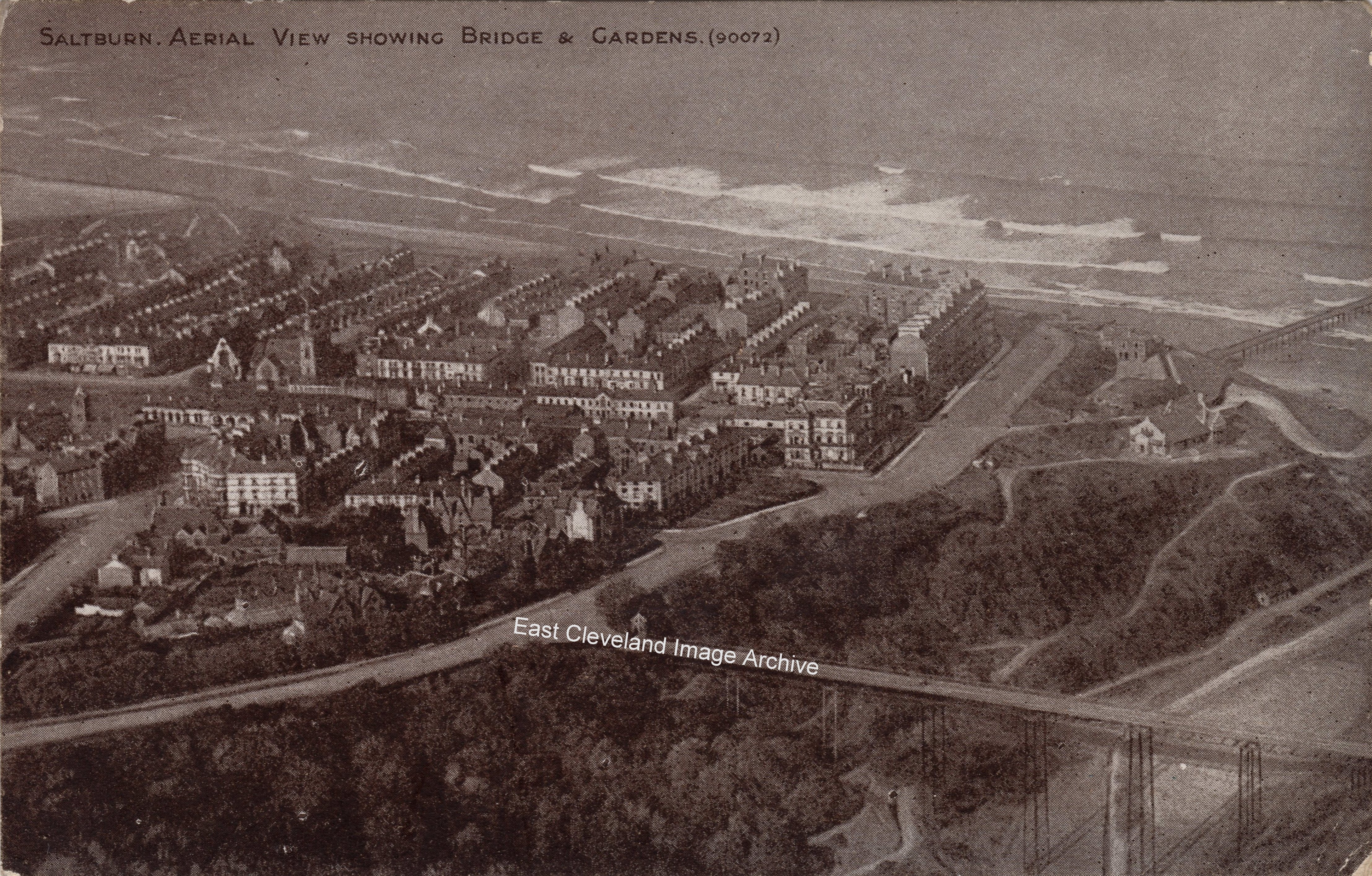
A further Photocrom Co. Ltd postcard and again undated; but again gives a lovely view of the Halfpenny Bridge and the wooded walks below the bridge. Interestingly the former Barnard Castle railway station portico – the ‘Greek Temple’ to many – is not visible, being well hidden among the trees. Callum Duff has advised on dating this image: “If your previous postcard ‘Saltburn from the Air 3’ was taken on the same day as this photo then you can date this image to between 1916 and 1924. The houses on the corner of Milton Street and Britannia Terrace are an effective way of dating postcards as they were completed in 1916 and are easily spotted because they are out of scale with the rest of the terrace. The image is also from before May 1924 because it shows the pier (obscured in this shot) with its original iron legs, prior to being breached by the SS Ovenbeg on 7th May 1924 and subsequently rebuilt in steel to a different design.”
Image courtesy of Julie Tyrka and many thanks to Callum Duff for the update..
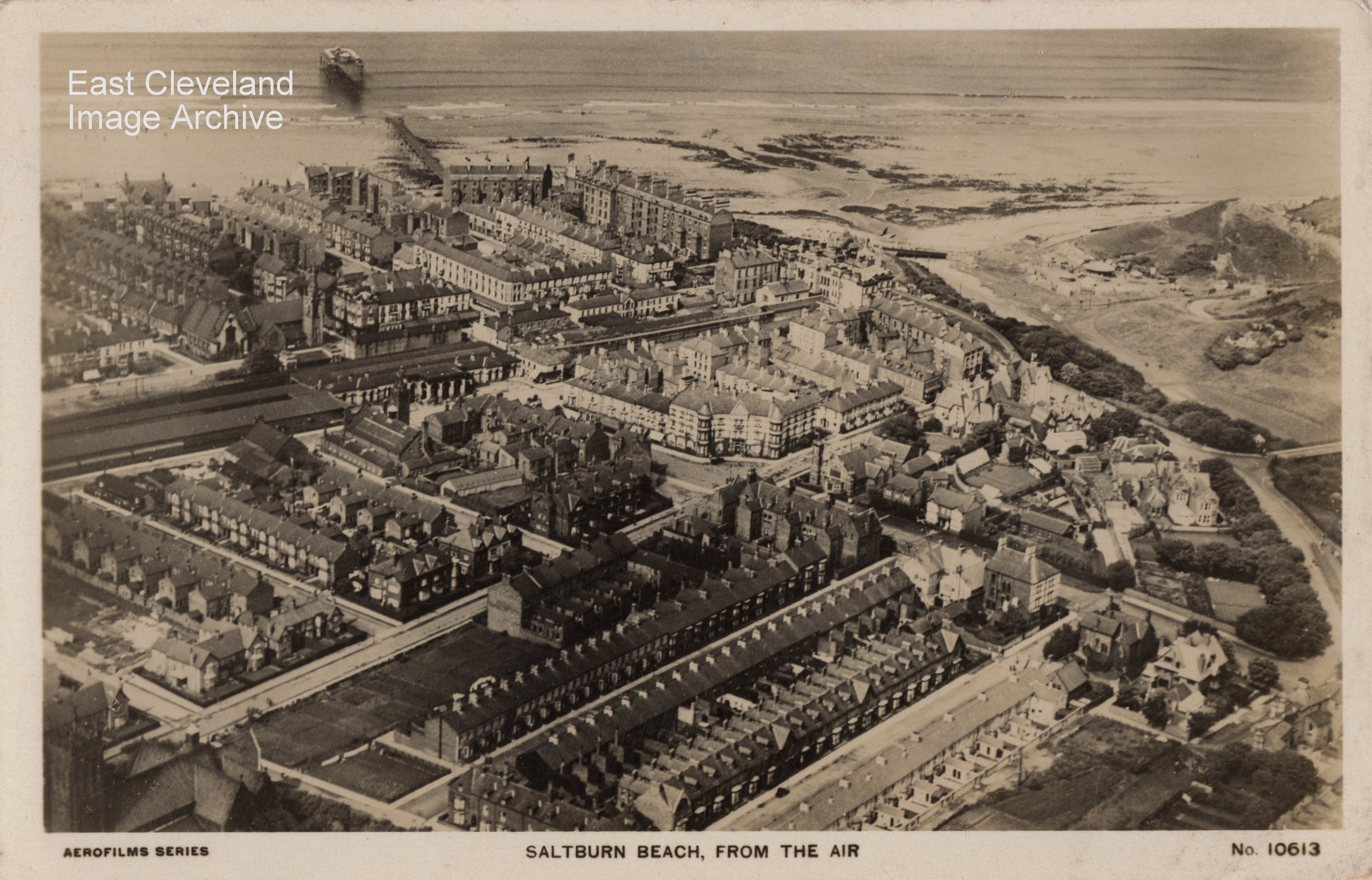
This Aerofilms image of Saltburn (first of a series of five which have come to the Archive) can be dated by the break in the pier, the card is postmarked August 1924, and must have been recently produced to that time. The schooner “Ovenbeg” broke a 70 metre gap in the pier on 8th May 1924, so would have been produced shortly after the boat had been removed from the beach. Note the space between Emmanuel church and the south side of Windsor Road which appears to be allotment gardens; also the covered platform of the railway station.
Image courtesy of Julie Tyrka.
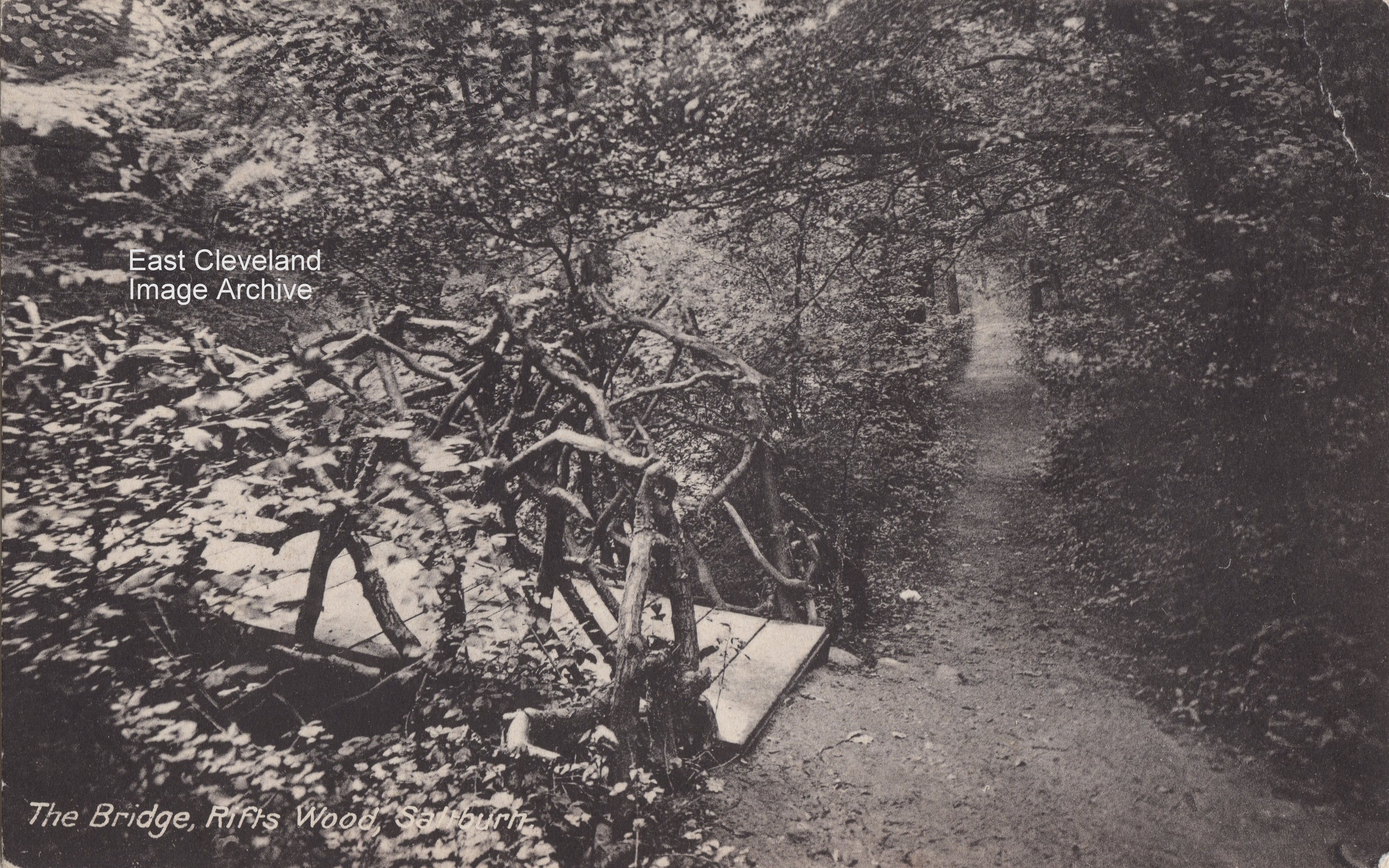
Who else has memories of this bridge, spanning Skelton Beck from Riftswood to the grounds of Rushpool Hall? Intriguingly it could be crossed but exiting into Rushpool Hall grounds required getting past the board door which was always locked! However by ways and means it was possible to get across and enter what was to many a ‘forbidden garden’. The image comes from an unused postcard, alas it bears no identification, but is believed to date from the early 20th century; certainly the bridge was there in the 1950s and 1960s. Alan Collins tells us: “I remember that this bridge existed between 1950 until about 1957 when I lived at 8 Victoria Road, opposite the Youth Hostel. For me and my brother David and sister Rosina, Riftswood was our favourite playground and we knew every inch of it from the sea right up to the golf course, past the water falls under the railway viaduct… where I found a proper tree house – with a wood burning stove – reached through a trapdoor with a rope ladder. Yes; the door was always locked but we used to shin across a fallen tree trunk to explore the ‘secret gardens’ at Rushpool. I once spoke to a soldier there; the whole place was used as a special mental hospital just for military personnel. The nurses used to tend them sunbathing there. They did tell me that I was not allowed to be there, but a sign on the bridge said Private No Entry! There was another way to get there from the Fairy Glens, at the bottom of a path from Victoria Road. The water mill and farmhouse had not long been abandoned at the downward end of the leat from the waterfall”. David Hill confirms with: “I can also remember the bridge, it was still there in 1962. When Rushpool Hall was not in use I used the bridge and paths through the grounds to walk to work at Woodlands Nursery opposite the Skelton Road entrance to Rushpool Hall. If you look carefully you can still see where the bridge used to be. In the ‘secret garden’ there is a Sequoiadendron giganteum (Giant Redwood) tree which because of its bark we used to call the “punch tree”; if punched the bark is soft. Further towards the hall and to the left there used to be some dogs graves, does anyone know if they are still there? Saltburn is a great place to spend one’s childhood, woods, rivers,coast, cliffs, very happy memories”.
Image courtesy of Julie Tyrka and thanks to Alan Collins and David Hill for the updates.
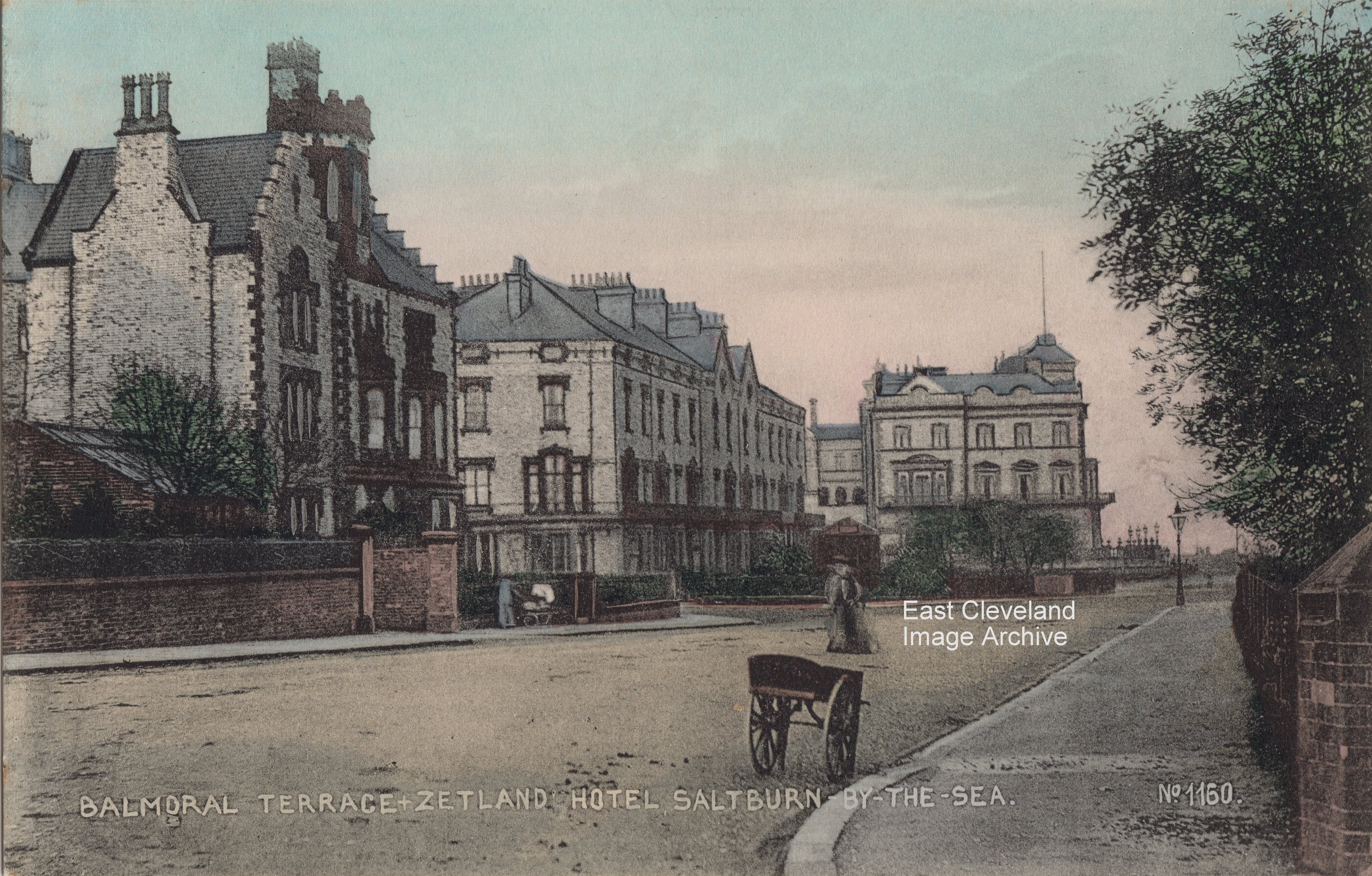
A further Phoenix postcard view from Glenside towards Balmoral Terrace and the Zetland Hotel; all the buildings were faced with the distinctive Pease bricks, a feature of many of the buildings in this ‘planned’ seaside resort. Brittain and Wright of Stockton; who produced the Phoenix series would not have far to travel to undertake any photography for this series of images of Saltburn; just hop on the train in Stockton and down the line to Saltburn! Balmoral Terrace was just across the end of Windsor Road (the Towers being on the opposite corner); the first houses on Balmoral Terrace served for many years as the dormitories for boarders at the Towers school), as the school was listed in Bulmers Directory of 1890 it would be in business at a similar time as this image.Callum Duff advises: “Saltburn was not in fact ‘planned’ to be a seaside resort. George Dickenson’s original plans for the town did not include beach amenities and access to this part of town was discouraged. The main attraction was The Valley Gardens and property overlooking this feature was considered most desirable. George Dickenson was replaced by John Anderson in 1867 and it is he that we should thank for developing beach facilities. Having been refused permission by the SIC to build a hotel on both Glenside and on the opposite corner of Milton Street, adjacent to The Zetland Hotel, Anderson was left with the option of developing a sizeable site on the soon to be named, Britannia Terrace. With no view of the valley to speak of, Anderson needed his own attraction and instigated the formation of the Saltburn Pier Company after a meeting at his newly-opened Alexandra Hotel in October 1867. This is why Saltburn Pier was built directly in front of the hotel. Balmoral Terrace is its own entity between Glenside (pictured here) and Dundas Street East. They are the first houses and also the last!” Callum also advises on another claim to fame for Balmoral Terrace: “Chris Scott Wilson says in his book, ‘The History of Saltburn’ says ‘After Alexander Graham Bell demonstrated his invention called ‘The Telephone’ at the Philadelphia Exhibition in 1876, one of the first telephone calls is believed to have been made in Saltburn. After reading of Bell’s invention, a Mr Irvine built one himself. While staying at Sir Francis Fox’s house ‘Cliffden’, he connected a line to Judge Ayrton’s house in Balmoral Terrace over the Ha’penny Bridge and they had a conversation’.”
Image courtesy of Julie Tyrka and thanks to Callum Duff for the updates.
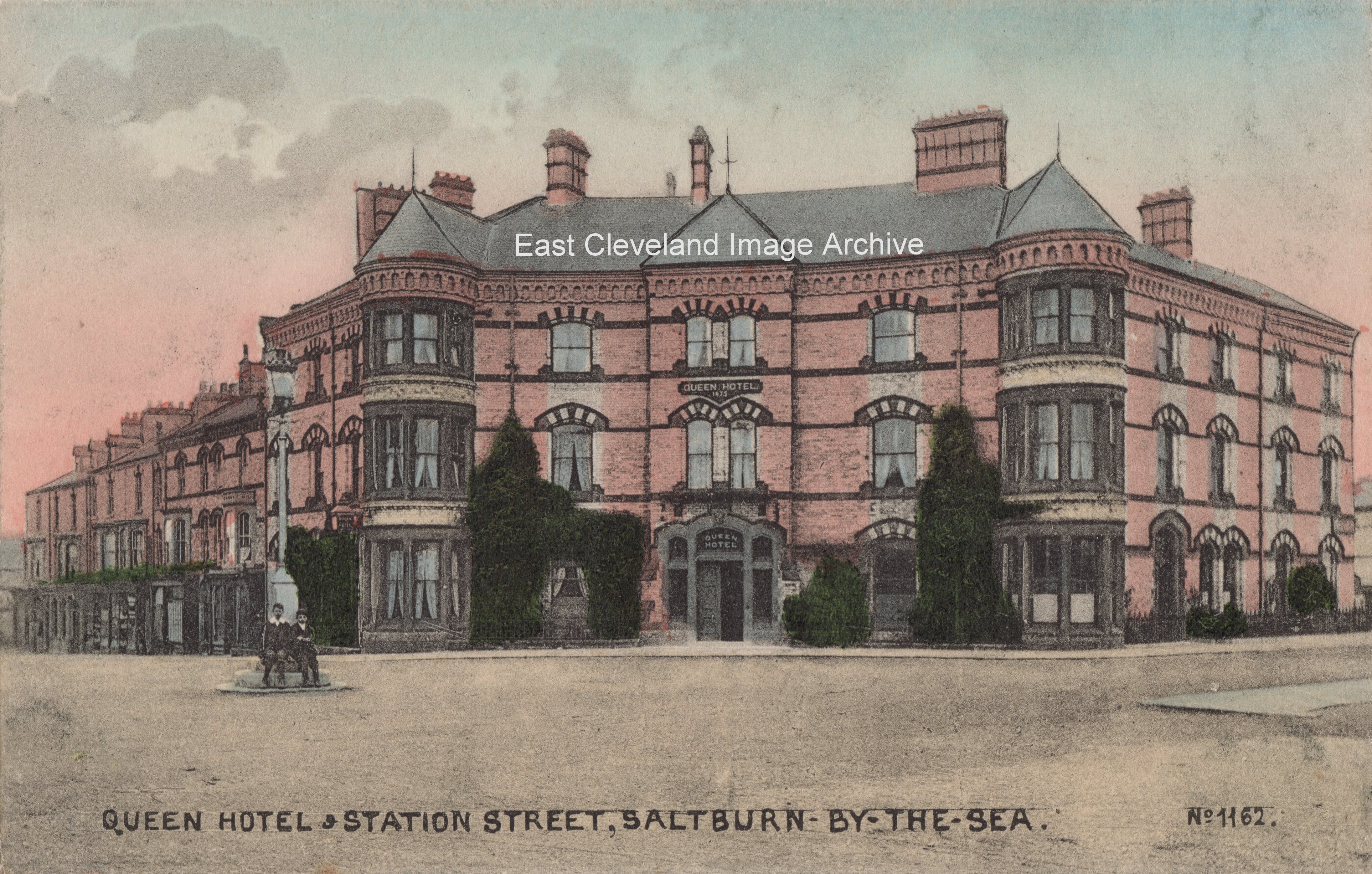
A Phoenix series postcard view of the Queen hotel dating from c.1905; the impressive frontage of the Queen’s Hotel was angled and originally envisaged to form one part of a ‘circus’ of buildings, close to the approach road to the town’s railway station. Only one side of this ‘circus’ was ever completed; the Queen’s Hotel is built in distinctive white ‘Pease’ brick as is found in many buildings in the town. Known today by many residents as “The Swingdoors” the building was intended as part of an impressive approach to the railway station entrance.
Obviously quiet enough for the two young men to sit on the lamp-post base, undisturbed by possible passing traffic; it would not be possible in today’s traffic.
Image courtesy of Juli Turka.
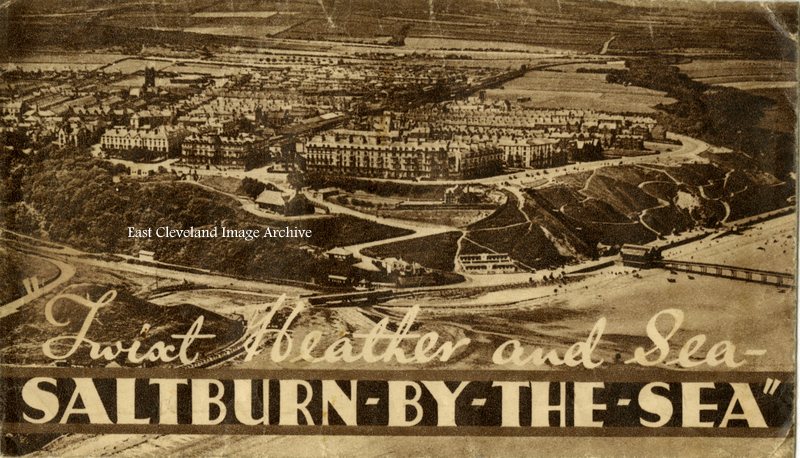
This letter card (an envelope with the above image on front) and space on the reverse for stamp and address was believed to date from the 1940s, note the fields where now there are caravans and a chalet park. Also how few vehicles are to be seen, a quieter pace of life. However; we have now been advised by Callum Duff: “Based on the appearance of two buildings, I would date this image between 1925 and 1935. The Pier Theatre was built in 1925 between the two shore end buildings to keep the pier as an attraction after being breached by SS Ovenbeg in 1924. The Assembly Rooms (now The Spa Hotel) was extended with an apron of new windows in 1935 and this work has yet to be started. If somebody knows when Exeter Street and Bristol Avenue were built, the date could be narrowed to something more accurate because it doesn’t look like work has started on this development either.”
Image courtesy of Iris Place and many thanks to Callum Duff for assistance in dating the image.
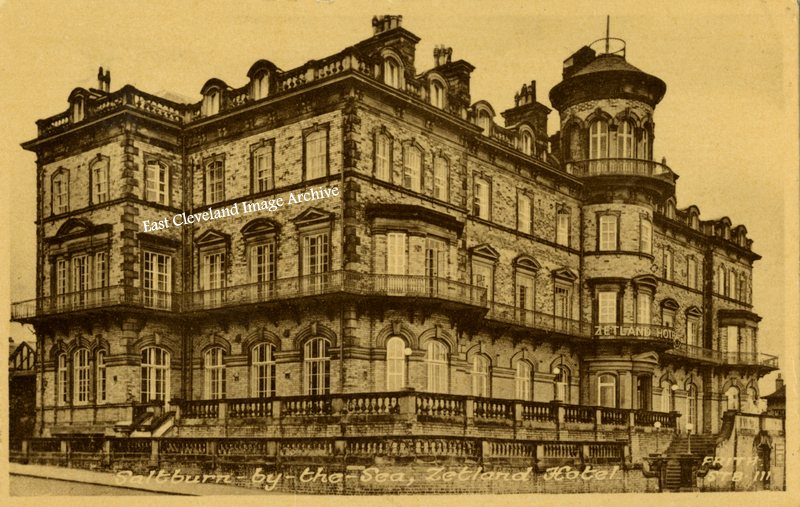
This Frith’s postcard view of what is today called The Zetland, is of the former Zetland Hotel; viewed from the entrance to the Valley Gardens on Glenside dates from the 1950s, externally little has changed today. The Hotel is no more and the building is now luxury apartments with stupendous views; although further developments have taken place to the rear of the building. Proposed as a luxury railway hotel by Henry Pease the founder of Saltburn, to promote the resort, it was built 1861 to 1863. Over the years the fortunes of the hotel and the resort declined and by the early 1970s the number of visitors to the town had dropped substantially. Many hotels struggled to survive and had to close. Eventually, the Zetland Hotel also closed in 1983 and was converted into apartments in 1989.
Image courtesy of Iris Place.
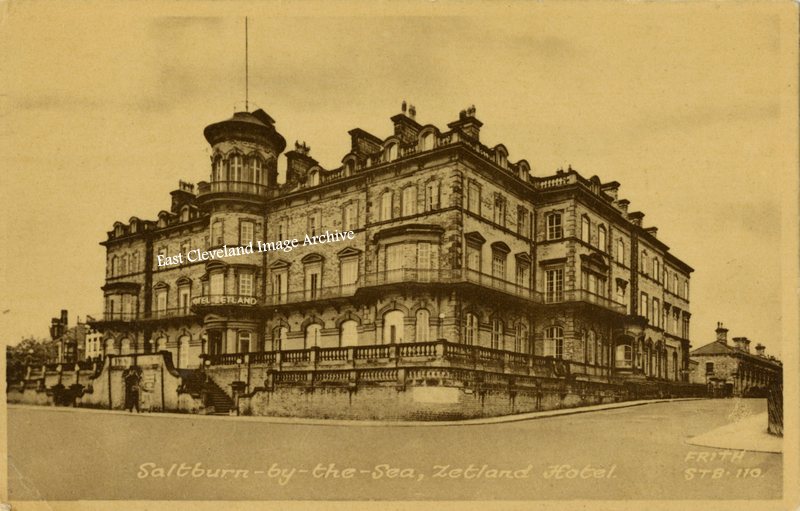
This Frith’s postcard view will be familiar to many travelling from the south and approaching Saltburn via the infamous Spa Bank! Dating from the 1950s, it is little changed today, the Hotel is no more, but the building is now luxury apartments with stupendous views. Proposed as a luxury railway hotel by Henry Pease the founder of Saltburn, to promote the resort, it was built 1861 to 1863. Over the years the fortunes of the hotel and the resort declined and by the early 1970s the number of visitors to the town had dropped substantially. Many hotels struggled to survive and had to close. Eventually, the Zetland Hotel also closed in 1983 and was converted into apartments in 1989. Today it is simply known as The Zetland.
Image courtesy of Iris Place.
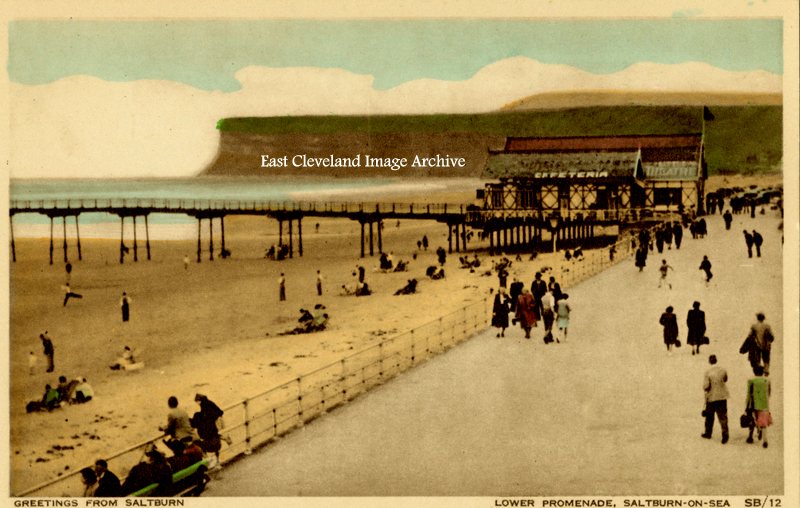
Another very dated view of the beach and promenade at Saltburn, this postcard views serves to remind us how dress styles have changed over the years. You dressed up to go to the beach; nowadays minimal clothing is the norm (and lashings of factor 50+ sun cream). John Keelty tells us: “My father used to take me and my twin brother, Peter to Saltburn and we used to ride up and down in the rail car from the beach to the promenade. When my father went for a pint in the Ship Inn, there was a big green hill, of grass were we used to play till he came out. Sometimes we used to share a bag of potato crisps if he was sat outside. There were lots of happy memories when we were young, in 1955. He used to take us once a year, to the seaside, and we always liked Saltburn; we got ice cream and used to walk along the pier.”
Image courtesy of Iris Place and thanks to John for that update.
Page 3 of 17«12345...10...»Last »
|
|










Recent Comments